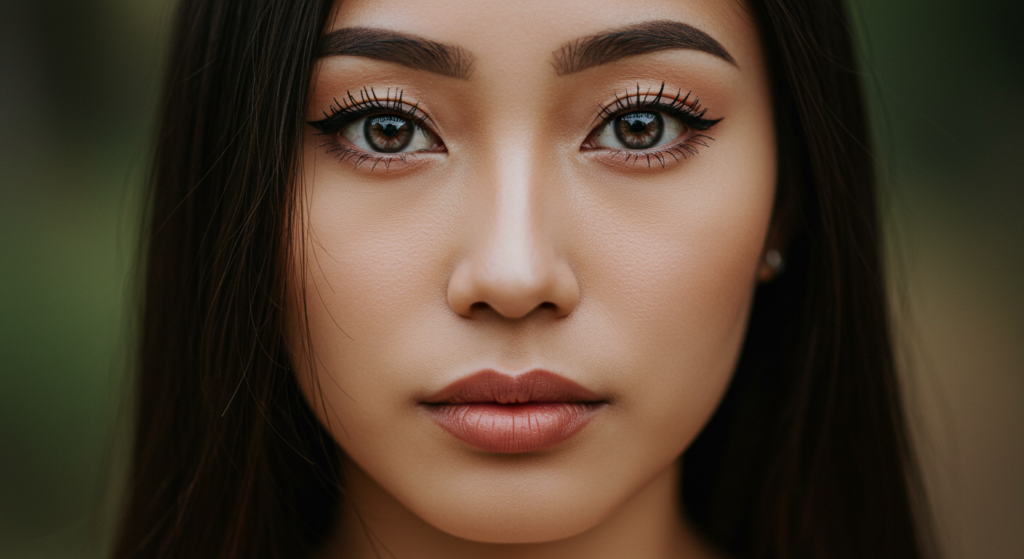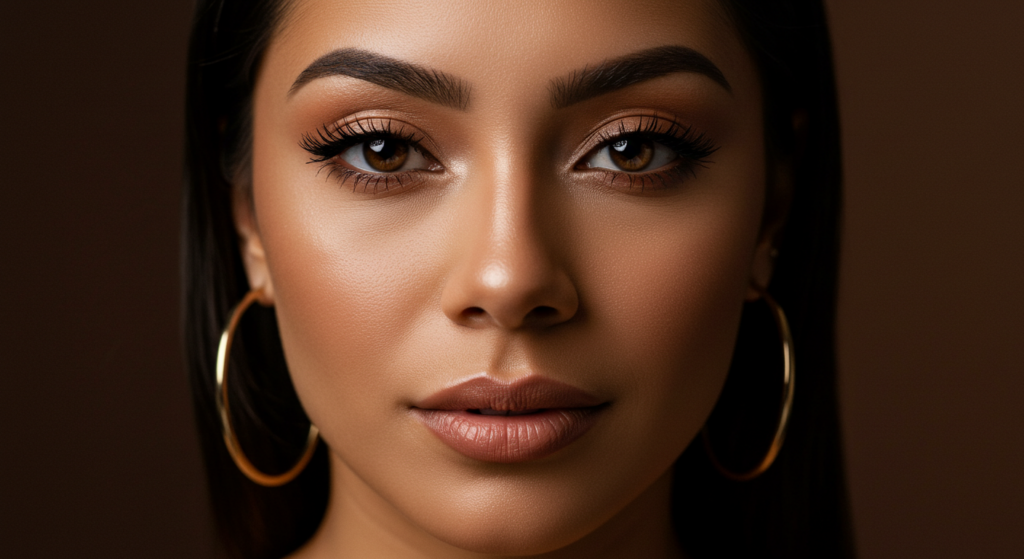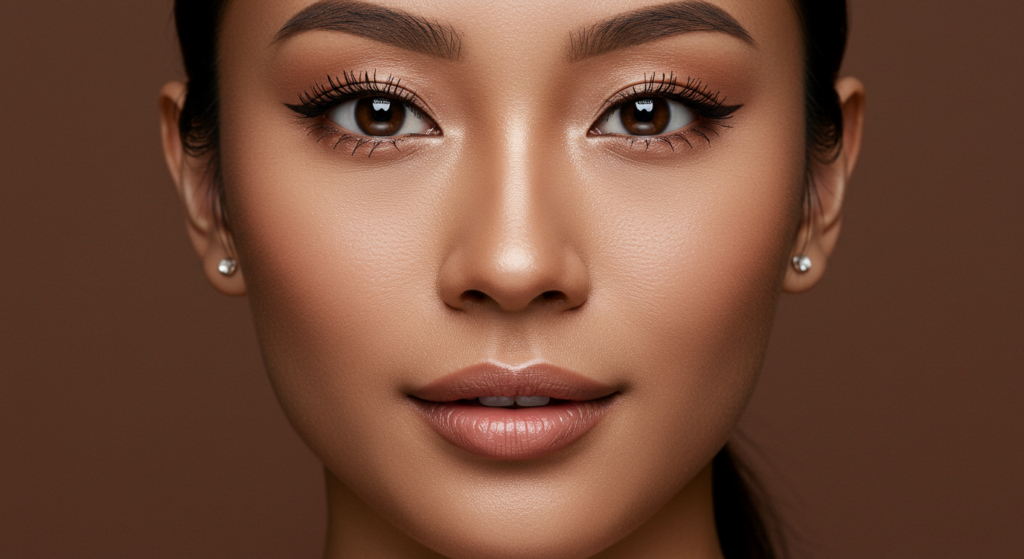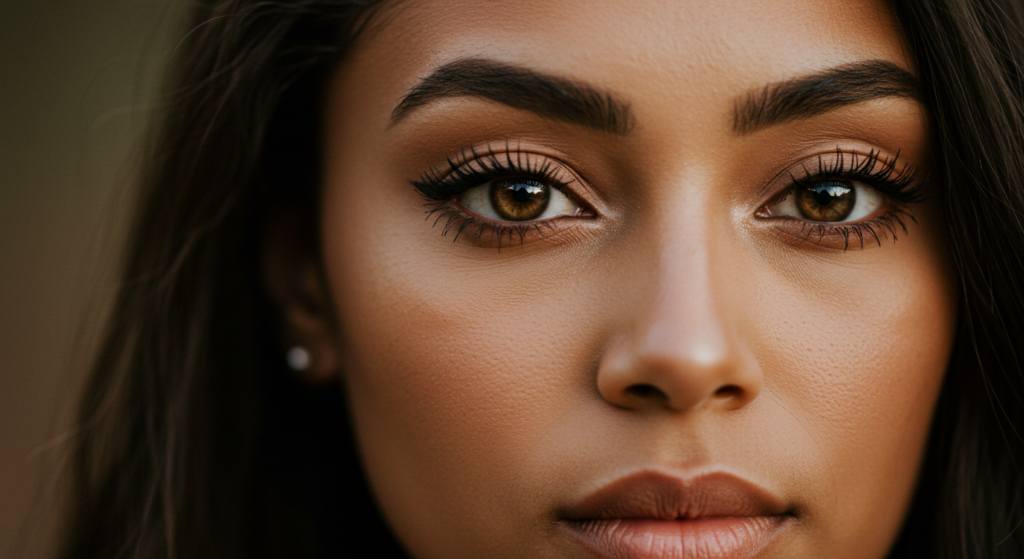As a surgeon deeply involved in the intricacies of facial aesthetics, I’ve always been captivated by the subtle yet profound impact of the eyes on overall appearance. The eyes, often referred to as the windows to the soul, communicate a wealth of emotions and contribute significantly to our perception of beauty and character. Among the many nuances of ocular aesthetics, the canthal tilt – the angle of the line connecting the inner and outer corners of the eye – plays a particularly fascinating role.
In this comprehensive exploration, we will delve into the concept of downward canthal tilt. This specific orientation, where the outer corner of the eye sits lower than the inner corner, can impart a unique set of characteristics to the face. We will examine its visual impact, discuss the common traits associated with it, and touch upon the factors that contribute to its presence. Understanding downward canthal tilt is crucial not only for those considering cosmetic enhancements but also for anyone interested in the art and science of facial harmony.

Table of Contents
Defining Canthal Tilt: A Fundamental Aspect of Eye Shape
Before we focus specifically on the downward tilt, it’s essential to establish a clear understanding of what canthal tilt encompasses. Imagine a straight line drawn from the medial canthus (the inner corner where the upper and lower eyelids meet near the nose) to the lateral canthus (the outer corner where the upper and lower eyelids meet towards the temple). The angle of this line relative to a horizontal plane determines the canthal tilt.
There are generally three categories of canthal tilt:
- Upturned Canthal Tilt: In this configuration, the lateral canthus is positioned higher than the medial canthus, creating an upward slant to the eyes. This is often associated with a youthful, energetic, and sometimes almond-shaped appearance.
- Neutral Canthal Tilt: Here, the medial and lateral canthi are roughly at the same horizontal level. This is considered a balanced and harmonious eye shape.
- Downward Canthal Tilt: This is the focus of our discussion. In this case, the lateral canthus sits lower than the medial canthus, resulting in a downward slope of the eye.

The Visual Impact of Downward Canthal Tilt: More Than Meets the Eye
Downward canthal tilt can significantly influence the perceived emotions and overall aesthetic of the face. While beauty is subjective and varies across cultures, certain visual cues associated with this eye shape are often observed:
- A Sense of Seriousness or Melancholy: The downward slant can sometimes be interpreted as conveying a sense of pensiveness, seriousness, or even a hint of sadness. This is partly due to the natural association of downward lines with expressions of sorrow or fatigue.
- A Softer or More Gentle Appearance: Conversely, the downward curve can also contribute to a softer, more gentle, and sometimes more approachable appearance. The lack of an upward lift might be perceived as less assertive or intense.
- A Look of Fatigue or Tiredness: In some instances, particularly when combined with other factors like under-eye bags or dark circles, a pronounced downward canthal tilt can contribute to the perception of tiredness or fatigue. This is because the downward slope can mimic the natural sagging that occurs with age and loss of skin elasticity.
- A Unique and Distinctive Feature: While not always considered a conventional beauty ideal in all cultures, a downward canthal tilt can also be a distinctive and memorable feature, adding character and uniqueness to an individual’s appearance.
- Influence on Overall Facial Harmony: The canthal tilt interacts with other facial features, such as the eyebrows, cheekbones, and jawline, to create overall facial harmony. A downward tilt can either complement or contrast with these features, influencing the overall aesthetic balance.
It’s crucial to remember that the visual impact of downward canthal tilt is not solely determined by the angle itself. Other factors, such as the size and shape of the eyes, the prominence of the eyelids, the presence of epicanthal folds (skin folds covering the inner corner of the eye), and the overall facial structure, all play a significant role in the final perception.

Common Traits Associated with Downward Canthal Tilt: Exploring the Underlying Factors
Downward canthal tilt is not a rare occurrence, and it can be observed across various populations and age groups. Several factors can contribute to its presence:
1. Genetics and Inherited Traits
Like many other facial features, the shape and tilt of our eyes are largely determined by our genetic makeup. Individuals may inherit a downward canthal tilt from their parents or ancestors. This is simply a natural variation in human anatomy and can be a familial trait.
2. Age-Related Changes
As we age, the skin and underlying tissues around the eyes naturally lose elasticity and collagen. This can lead to a gradual descent of the outer corners of the eyes, resulting in a more pronounced downward canthal tilt over time. The weakening of the canthal tendons, which support the eyelids, can also contribute to this phenomenon.
3. Facial Muscle Activity and Expression
The muscles surrounding the eyes, particularly the orbicularis oculi muscle, play a role in our facial expressions. Repeated muscle contractions over time can influence the shape and position of the eyelids and the canthi. While not a direct cause of downward tilt, certain habitual expressions might subtly contribute to its appearance.
4. Skeletal Structure of the Face
The underlying bony structure of the face, particularly the shape of the eye sockets (orbits), can also influence the canthal tilt. The way the bones are shaped can naturally position the eyes with a slight downward slant.
5. Certain Medical Conditions and Syndromes
In some cases, a downward canthal tilt can be associated with certain medical conditions or genetic syndromes. For instance, some neurological disorders or congenital syndromes might manifest with distinctive facial features, including the shape and tilt of the eyes. However, it’s important to note that a naturally occurring downward canthal tilt in an otherwise healthy individual is not indicative of a medical problem.
6. Ethnic and Ancestral Variations
Eye shape and canthal tilt can vary across different ethnic and ancestral groups. Certain populations may have a higher prevalence of individuals with a naturally occurring downward canthal tilt as a part of their distinct facial characteristics.
Distinguishing Downward Canthal Tilt from Other Eye Conditions
It’s important to differentiate a natural downward canthal tilt from other conditions that might cause a similar appearance:
- Ptosis: This refers to the drooping of the upper eyelid. While it can make the eye appear smaller and potentially contribute to a perceived downward slant, the primary issue is the position of the upper eyelid, not necessarily the angle of the canthi.
- Eyelid Retraction: This is the opposite of ptosis, where the eyelid is pulled back, revealing more of the white of the eye. This condition doesn’t directly impact the canthal tilt.
- Lagophthalmos: This is the inability to close the eyelids completely. While it can affect the overall appearance of the eyes, it’s a functional issue rather than a change in the canthal tilt itself.
- Facial Palsy: Conditions like Bell’s palsy can cause weakness or paralysis of the facial muscles, which can lead to asymmetry in the position of the eyelids and the canthi. In such cases, the downward tilt might be more pronounced on the affected side.
A thorough examination by a qualified medical professional is necessary to accurately diagnose any underlying eye conditions.
Cultural and Aesthetic Perceptions of Downward Canthal Tilt
The perception of beauty and the significance attributed to different facial features can vary considerably across cultures and throughout history. While an upturned canthal tilt is often associated with youthfulness and attractiveness in many Western cultures, downward canthal tilt has also been appreciated for its unique qualities.
In some cultures, a slight downward slant to the eyes might be seen as conveying maturity, wisdom, or a gentle demeanor. The interpretation of this feature is often influenced by broader cultural beauty standards and the overall context of the face.
Cosmetic Considerations and Addressing Downward Canthal Tilt
For individuals who are self-conscious about a pronounced downward canthal tilt, or for those experiencing age-related descent of the outer corners of the eyes, various cosmetic options are available. It’s crucial to approach such considerations with realistic expectations and a thorough understanding of the potential outcomes and risks involved.
Non-Surgical Options
- Botulinum Toxin (Botox): In some cases, strategically placed injections of botulinum toxin can help to subtly lift the outer corners of the eyes by relaxing the muscles that pull them downward. This is a temporary solution that typically lasts for several months.
- Dermal Fillers: Injectable dermal fillers can be used to add volume to the upper eyelids or the area around the outer corners of the eyes, which can indirectly create a more lifted appearance.
- Thread Lifts: These minimally invasive procedures involve inserting dissolvable threads under the skin to lift and tighten sagging tissues, including around the eyes. This can provide a subtle lift to the outer canthi.
- Makeup Techniques: Skilled makeup application can effectively alter the perceived shape and tilt of the eyes. Techniques like using eyeliner and eyeshadow to create an upward flick at the outer corner can visually lift the eyes.
Surgical Options
- Canthoplasty: This surgical procedure specifically targets the lateral canthal tendon. It involves repositioning and tightening the tendon to elevate the outer corner of the eye, creating an upturned or more neutral canthal tilt.
- Canthopexy: This procedure is similar to canthoplasty but typically involves less extensive manipulation of the canthal tendon. It aims to stabilize and support the lower eyelid and can provide a subtle lift to the outer canthus.
- Blepharoplasty (Eyelid Surgery): While primarily focused on removing excess skin and fat from the upper and lower eyelids, blepharoplasty can sometimes indirectly improve the appearance of the canthal tilt by addressing sagging and drooping in the surrounding areas.
It’s essential for anyone considering cosmetic procedures to consult with a board-certified and experienced surgeon who specializes in facial aesthetics. A comprehensive evaluation, including a discussion of the individual’s goals and expectations, is crucial to determine the most appropriate treatment plan.
The Importance of Individuality and Facial Harmony
While understanding the characteristics and potential cosmetic interventions related to downward canthal tilt is valuable, it’s crucial to emphasize the importance of individual beauty and facial harmony. Our unique combination of facial features is what makes us distinct and interesting.
A downward canthal tilt, like any other natural variation in eye shape, can be a beautiful and expressive feature. Rather than striving for a uniform ideal, appreciating and enhancing our individual features while maintaining overall facial balance should be the primary goal.
Conclusion: Embracing the Nuances of Ocular Aesthetics
The canthal tilt, particularly the downward orientation, is a fascinating aspect of facial aesthetics that contributes significantly to the overall visual impact of the eyes. Understanding its characteristics, the factors that influence it, and the common traits associated with it allows for a deeper appreciation of the nuances of human beauty.
As a surgeon, I believe in empowering individuals with knowledge about their anatomy and the available options for enhancement. Whether you possess a natural downward canthal tilt or have noticed age-related changes, understanding this feature can help you make informed decisions about your aesthetic goals.
Ultimately, the most important aspect of facial aesthetics is to feel confident and comfortable in your own skin. Embracing our individual features, including the unique shape and tilt of our eyes, is key to fostering a positive self-image and appreciating the diverse beauty that exists in the world.
Thank you for joining me on this exploration of downward canthal tilt.
Visit Dr.MFO Instagram profile to see real patient transformations! Get a glimpse of the incredible results achieved through facial feminization surgery and other procedures. The profile showcases before-and-after photos that highlight Dr. MFO’s expertise and artistic vision in creating natural-looking, beautiful outcomes.
Ready to take the next step in your journey? Schedule a free consultation with Dr. MFO ( Best Facial Feminization Surgeon for You) today. During the consultation, you can discuss your goals, ask any questions you may have, and learn more about how Dr. MFO can help you achieve your desired look. Don’t hesitate to take advantage of this free opportunity to explore your options and see if Dr. MFO is the right fit for you.









